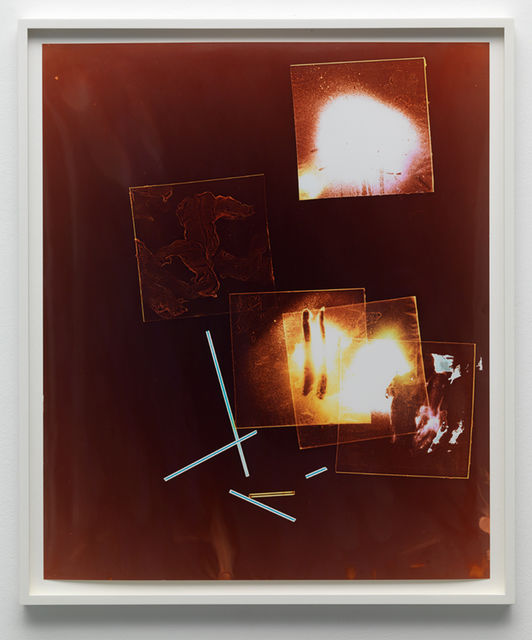
Stigter van Doesburg proudly presents New Cave Art Now, the first solo exhibition of the British artist Nathaniel Mellors at the gallery. Mellors is known for making films and installations that deal with the mutability of language through absurdist scripts, psychedelic theatre, film, video, performance, photography and sculpture.In New Cave_Art Now the artist displays his latest film "The Sophisticated Neanderthal Interview" (21 min., 2013) and related resin sculptures and photograms.
The 35mm film involves an encounter between a young ‘Modern’ named Truson (a character from Mellors’ ongoing work Ourhouse, 2010-) and a 35,000 years old Neanderthal. The meeting takes place outside a large cave called ‘E-den’ (filmed in Bronson Canyon, Hollywood - site of the original 1960’s ‘Batcave’), from which the Neanderthal has been ejected by his contemporaries. Truson attempts to interview the Neanderthal in an earnest, anthropological manner and discovers that the Neanderthal man is a kind of proto-artist who has been banned from the caves by an organization called ‘The Sporgo’. According to the Neanderthal The Sporgo own the caves and control the art within them, perpetuating a cultural mode in which the same subjects and themes are repeated for thousands of years.
In the surreal vision of Mellors, after an attempt to cannibalize his interviewer the Neanderthal frees himself from the caves (and The Sporgo) like the pioneers of the Neolithic Revolution - through a technological epiphany. He conceives of building - “I’ll make my own cave out of these cave-like materials” (rocks) – “let there be house!” The film then flips into a futuristic cave-interior sequence in which the Neanderthal is adorned entirely in Yamamoto sportswear and wears a Fresnel lens which make his eyes look massive. He describes himself as hi-definition (“I’m a bigger resolution - you can’t resolve me!”) and explains to the naïve homo-sapiens that “there’s more than one way of being human”.